What Is the Leopold Matrix?
The Leopold Matrix is a widely recognized tool used in Environmental Impact Assessment (EIA). Developed in 1971 by Luna Leopold and colleagues from the U.S. Geological Survey, it provides a structured, semi-quantitative method to identify and evaluate the potential environmental impacts of a project or development activity.
Essentially, it is a two-dimensional matrix that combines:
- Project actions or activities (typically 100 rows)
- Environmental factors (typically 88 columns)
This results in an 8,800-cell grid where each intersection (cell) represents a possible interaction between a specific activity and an environmental factor. Each of these interactions is evaluated based on two key metrics:
- Magnitude (scale of the impact)
- Importance (significance)


The Leopold Matrix allows environmental professionals to systematically analyze complex projects and prioritize which environmental impacts require mitigation or deeper analysis.
Whether assessing a highway construction, a hydroelectric plant, or a mining project, the Leopold Matrix enables decision-makers to consider a project’s environmental footprint across multiple dimensions ecological, physical, and social.
Origins and Historical Context of the Leopold Matrix
The Leopold Matrix emerged at a time when environmental regulation and sustainability consciousness were beginning to shape public policy. In 1971, Luna Leopold and his team introduced the matrix as a response to the need for more objective, transparent, and replicable environmental evaluations.
Back then, many EIAs were qualitative or purely narrative. The Leopold Matrix introduced a structured approach with numeric scoring, which allowed quantification and comparison of environmental impacts.
Initially developed for U.S. federal use, especially in large infrastructure and water development projects, the matrix was rapidly adopted by environmental practitioners worldwide.
Over the decades, it has:
- Informed policy-level environmental decisions.
- Been adapted in countries such as India, Iran, and South Africa.
- Inspired derivative methods like the Modified Leopold Matrix, which integrates weights and thresholds for more advanced analyses.
The tool’s simplicity and adaptability made it a cornerstone of EIA education in universities and a first-step tool in many official environmental screening processes.
Its historical value lies not only in its early adoption but in its ongoing relevance. Even with advances like Geographic Information Systems (GIS) and machine learning models, the Leopold Matrix remains a foundational instrument for impact scoping and early-stage project evaluations.
Structure and Functioning of the Leopold Matrix
At the heart of the Leopold Matrix is a grid format, where:
- The vertical axis lists typical project activities (e.g., land clearing, water use, noise generation).
- The horizontal axis lists environmental receptors (e.g., soil erosion, wildlife habitats, air quality).
Each cell in this grid answers a critical question:
“Will this activity affect this environmental factor, and if so, how much and how significantly?”
For every relevant interaction, the evaluator inputs:
- A magnitude score (how big the impact is)
- An importance score (how relevant it is to decision-making)
Example:
If «excavation» (activity) impacts «soil stability» (factor), the cell may be filled with:
- Magnitude: -8
- Importance: 9
Written as (-8, 9)
Once filled, the matrix becomes a diagnostic snapshot of the project’s overall environmental impact profile.
Many practitioners use color codes or heatmaps to highlight high-impact intersections visually. Others aggregate scores per row or column to prioritize:
- Which activities cause the most damage
- Which environmental aspects are most at risk
This visual and numerical approach allows non-experts—such as local stakeholders or policymakers—to grasp the relative severity of environmental risks.
Step-by-Step Guide to Using the Leopold Matrix
Using the Leopold Matrix involves a structured sequence of actions. Here is a simplified breakdown:
Step 1: Define the Project Scope
Identify all proposed activities during construction, operation, and decommissioning.
Step 2: Identify Environmental Factors
Create a list of environmental components that might be affected—air, water, soil, flora, fauna, landscape, cultural heritage, etc.
Step 3: Set Up the Matrix Grid
List activities on the vertical axis and environmental factors on the horizontal axis.
Step 4: Analyze Interactions
For each cell:
- Evaluate whether a meaningful interaction occurs.
- If yes, assign magnitude and importance values.
Step 5: Calculate Impact Scores
Optional: Multiply magnitude × importance for each cell to quantify severity.
Step 6: Interpret Results
- Look for cells with high scores.
- Identify cumulative effects or critical impacts.
- Highlight areas that require mitigation, redesign, or avoidance.
Step 7: Use in Decision-Making
Incorporate the matrix into the EIA report and use it as a basis for:
- Stakeholder consultations
- Environmental management plans
- Regulatory decisions
Used properly, the Leopold Matrix transforms an overwhelming amount of information into an actionable impact map.
Advantages and Limitations of the Leopold Matrix
✅ Advantages
- Visual clarity: Matrix layout makes complex interactions easier to understand.
- Systematic approach: Ensures no activity or factor is overlooked.
- Semi-quantitative: Balances qualitative judgment with numeric support.
- Widely adaptable: Applicable across sectors and geographies.
- Supports early screening: Ideal during the planning and scoping phases.
❌ Limitations
- Subjectivity: Scores rely on expert judgment and may vary between assessors.
- No mitigation inclusion: The matrix doesn’t account for mitigation measures unless added manually.
- Overwhelming for large projects: 8,800 cells can be time-consuming to assess.
- No temporal dimension: Doesn’t differentiate between short- and long-term effects.
- Lacks cumulative impact analysis: Each interaction is treated in isolation.
Despite its limitations, the Leopold Matrix remains a valuable first-pass tool, especially when used alongside other EIA instruments like GIS mapping, stakeholder engagement, and cost-benefit analysis.
Real-World Applications and Case Studies
Over the decades, the Leopold Matrix has been applied in various real-world contexts, including:
- Highway and infrastructure planning: Used to screen environmental risks of route alternatives.
- Mining projects: Helps evaluate habitat disruption, water contamination, and community impact.
- Landfills and wastewater projects: Applied to compare site options and assess long-term effects.
- Hydropower and dam developments: Useful in balancing economic gain vs. ecological loss.
Case in Point: Solid Waste Disposal in Gonabad, Iran
Researchers applied a Modified Leopold Matrix to assess two landfill locations. The matrix helped quantify the risk to groundwater, biodiversity, and soil. Based on the scores, one site was clearly more suitable.
Case in Point: Karbala Water Transfer Project
In Iraq, the matrix was used to evaluate ecological and social impacts of water pipeline alternatives. Key findings influenced the design and alignment to minimize displacement and biodiversity loss.
These examples show how adaptable the matrix is across legal, ecological, and cultural contexts. Its strength lies in its ability to structure comparisons across multiple development options.
Leopold Matrix vs Other EIA Methods
The Leopold Matrix is not the only matrix-based tool in environmental assessment. Here’s how it compares:
| Feature | Leopold Matrix | Simple Checklists | Network Diagrams | GIS-based Tools |
|---|---|---|---|---|
| Detail Level | High | Low | Moderate | High |
| Quantitative Support | Semi | None | Visual | Strong |
| User Accessibility | Moderate | Easy | Difficult | Requires training |
| Visual Output | Matrix Grid | List | Diagrams | Maps |
The Leopold Matrix is especially useful during initial EIA scoping, while GIS and simulation models are better suited for advanced modeling and spatial analysis.
In practice, these tools are complementary. Many EIAs start with a matrix to identify hot spots and then use advanced tools to refine, validate, and visualize findings.
Practical Tips for Using the Leopold Matrix
Here are best practices to maximize effectiveness:
- Tailor the matrix: Don’t rigidly stick to 100×88. Customize rows/columns to suit the project.
- Form multidisciplinary teams: Involve ecologists, engineers, and sociologists to reduce bias.
- Use thresholds: Define thresholds to flag “red zone” impacts that require mitigation.
- Document rationale: Always explain why a magnitude or importance score was given.
- Digitize the process: Use Excel, GIS, or EIA-specific software for better visualization and easier updates.
- Incorporate feedback: Review matrix results with stakeholders to improve legitimacy and completeness.
The Leopold Matrix is most powerful when used not just as a technical tool, but as a communication and transparency platform.
When and Why to Use the Leopold Matrix
The Leopold Matrix continues to stand the test of time because of its clarity, versatility, and structured approach. Whether you’re an EIA consultant, government planner, or environmental science student, this matrix offers:
- A solid starting point for identifying key environmental impacts
- A scalable framework that adapts to various project sizes and sectors
- An educational tool to train new practitioners in EIA logic
While it has limitations, particularly regarding mitigation, spatial modeling, and cumulative effects, these can be mitigated by integrating other tools in later EIA phases.
In the age of digital tools and complex modeling, the Leopold Matrix reminds us that sometimes, a clear grid, informed judgment, and transparent scoring system are the best ways to make sense of environmental complexity.









